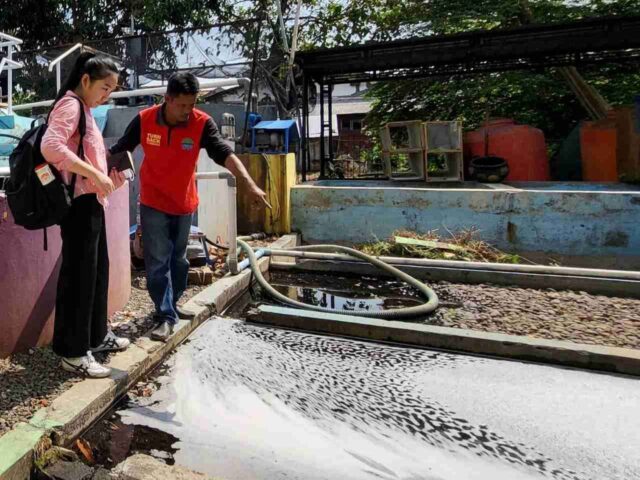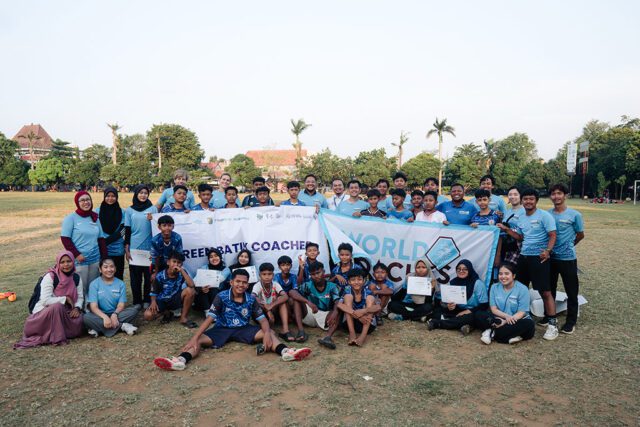One of the efforts from the Government of Pekalongan City to reduce the direct discharge of batik waste into rivers is to build communal wastewater treatment plants (WWTP). Together with the Blue Deal team, The Water Agency visited three active communal WWTPs around the city, Jenggot, Kauman and Banyuurip.
Jenggot Wastewater Treatment Plant
Jenggot WWTP was built to serve the scattered batik home industries around the area. The batik industries habitually discharge their waste directly into the open channel, which is directed to the water treatment plant. Jenggot WWTP uses the natural treatment method to treat the wastewater, namely constructed wetlands, with natural plants and activated stones to absorb the toxin and clear the water. The process takes a long time and needs a vast area to accommodate everything. After being treated and in accordance with disposal standards, the wastewater then discharges to the river nearby.

Figure 1. Jenggot WWTP that needs vast area to accommodate the constructed wetland system
However, the wastewater channel directed to the Jenggot WWTP is merged between batik and domestic wastewater, resulting in higher wastewater to treat (over capacity) and making some of the wastewater not be treated, which then flowed directly to the river. It is also estimated that the capacity in Jenggot is only half of the original, around 20-40%, and the rest flows directly to the river. This is due to a lack of maintenance and monitoring.

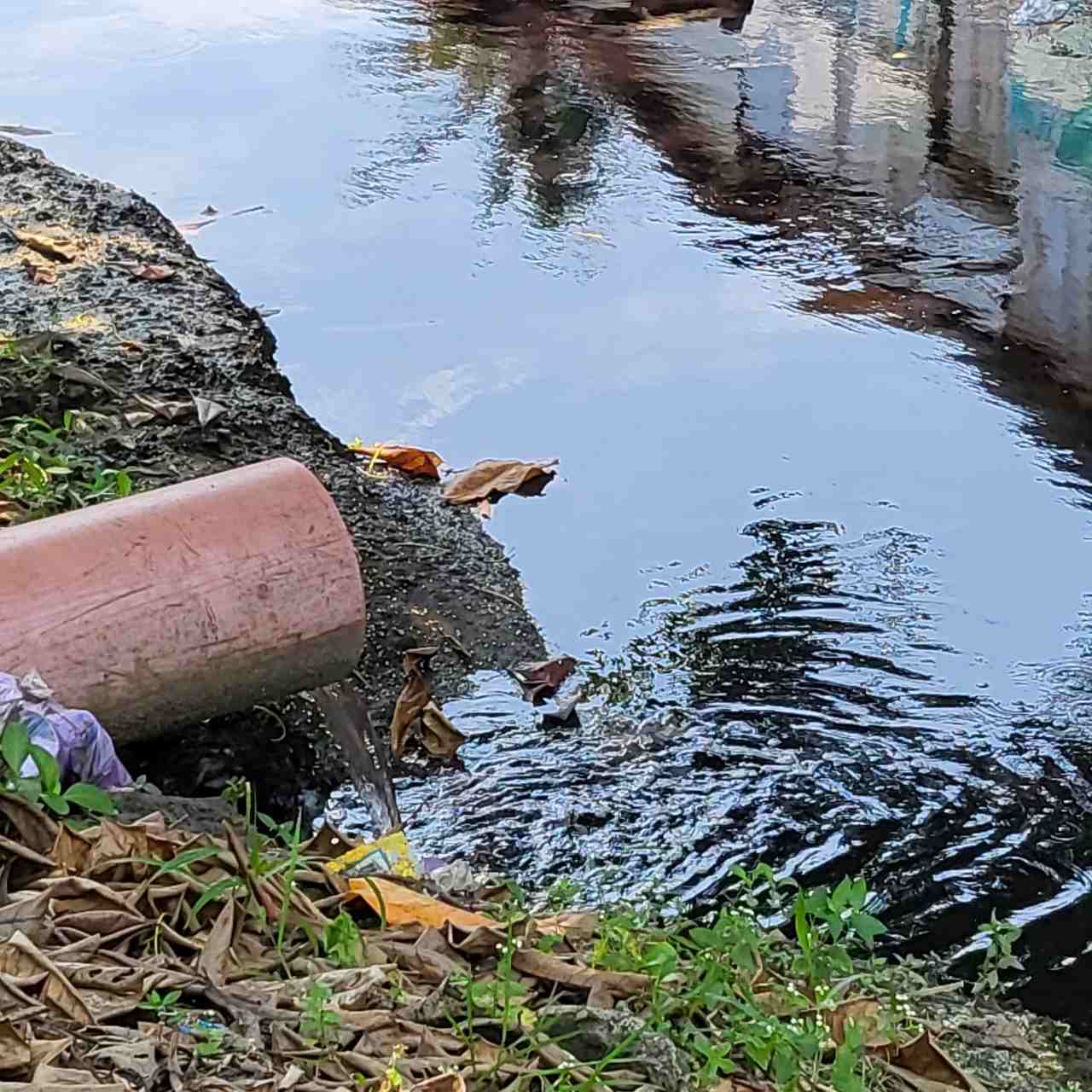
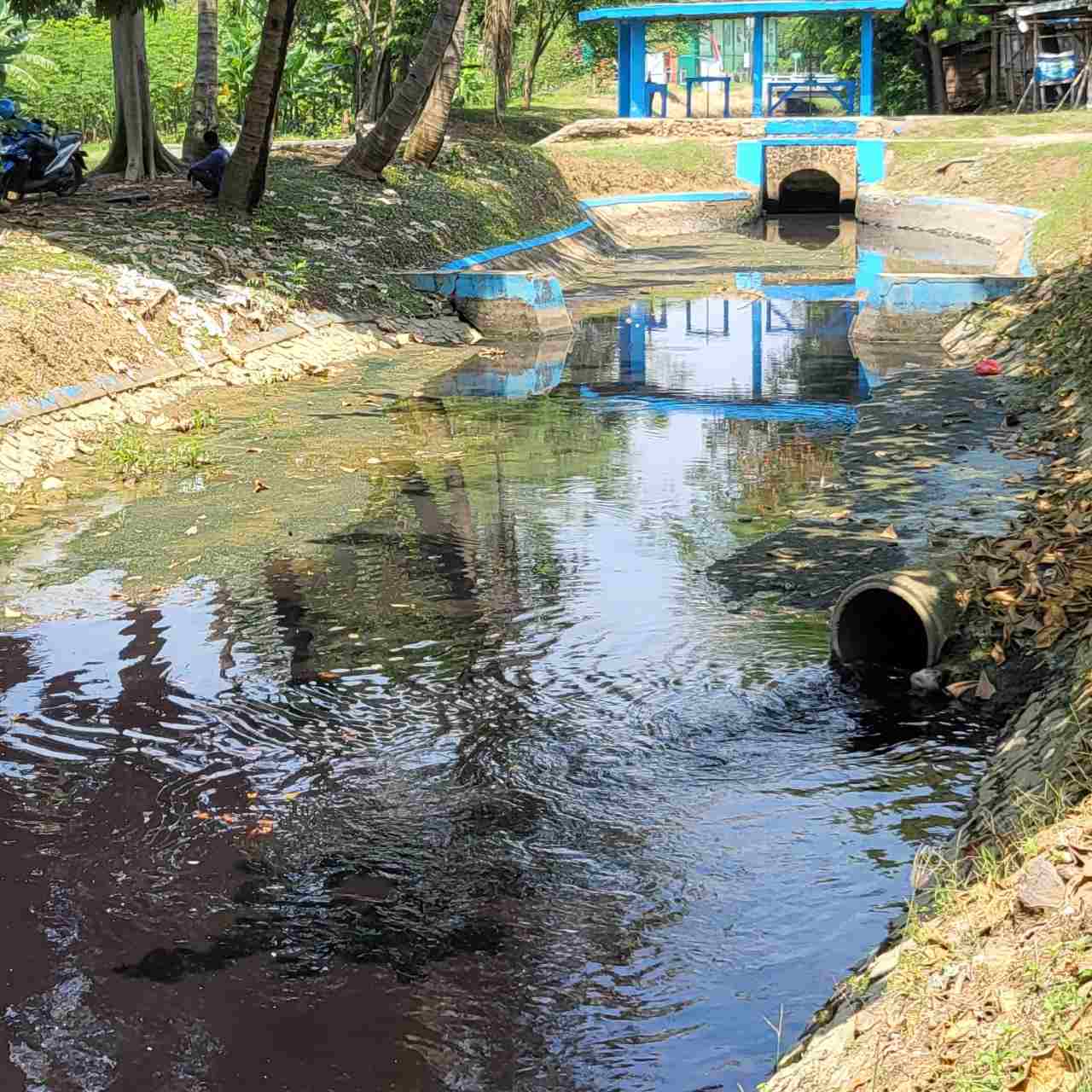
Figure 2. (left) the mix batik and wastewater in the open channel that flows directly to the river and to the Jenggot WWTP, (middle) the discharge water from the Jenggot WWTP already according to the disposal standard, (right) the untreated discharge wastewater directly from the open channel end up in the river
Kauman Wastewater Treatment Plant
A great example of centralised batik wastewater treatment was showcased in the Kauman WWTP. Each batik workshop in the area, called Kauman Batik Village, is connected to the wastewater treatment plant through a dedicated line of pipes. The plant is dedicated only to treating batik wastewater. Thus, before being treated with bacteria (anaerobic pond), the remaining wax in the wastewater can be collected and sold.

Figure 3. The process of wastewater treatment in Kauman WWTP and the end result
The effectiveness of Kauman WWTP is high. Yet, as the plant is running 24/7 and powered by electricity, the cost of running Kauman WWTP is the highest among the other wastewater treatment plants in Pekalongan.
Banyuurip Wastewater Treatment Plant
Banyuurip is the newest WWTP in comparison to the other two, and similar to Kauman, it is dedicated to Batik waste only. It uses a combination of anaerobic ponds and constructed wetlands to treat the wastewater before discharging it into the open channel. The WWTP is made to treat almost 70 batik industries in the area.
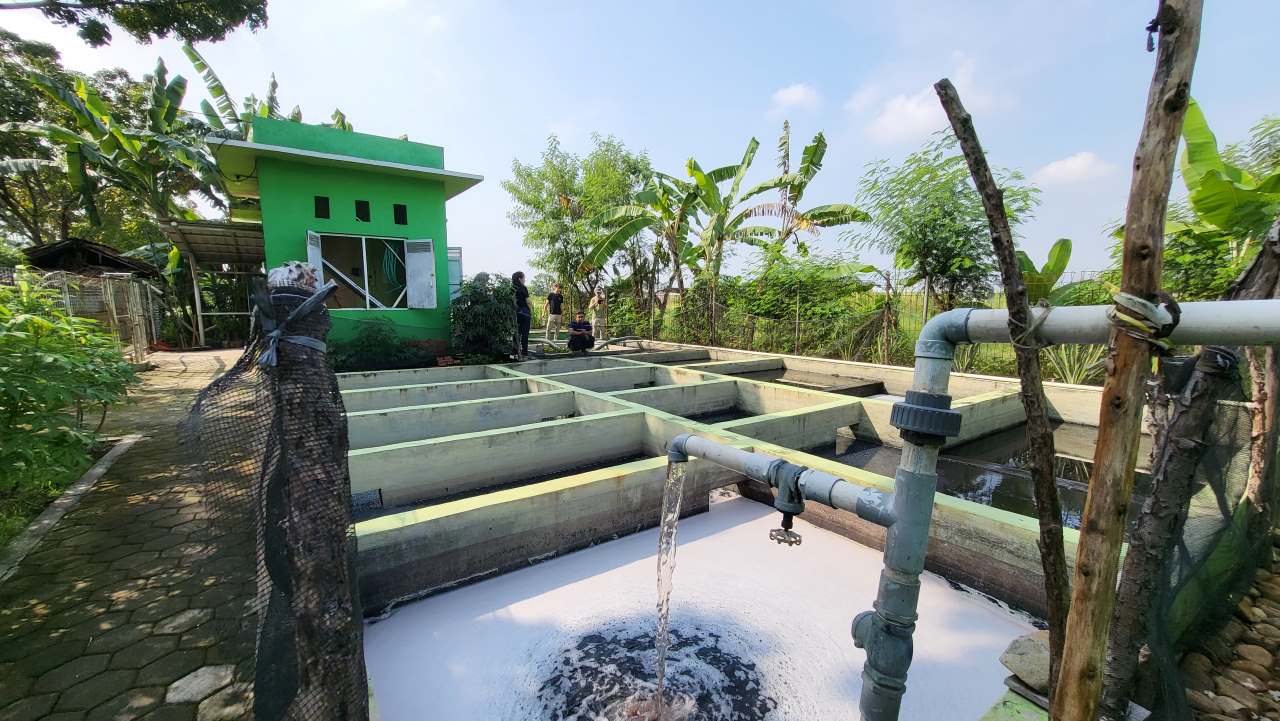
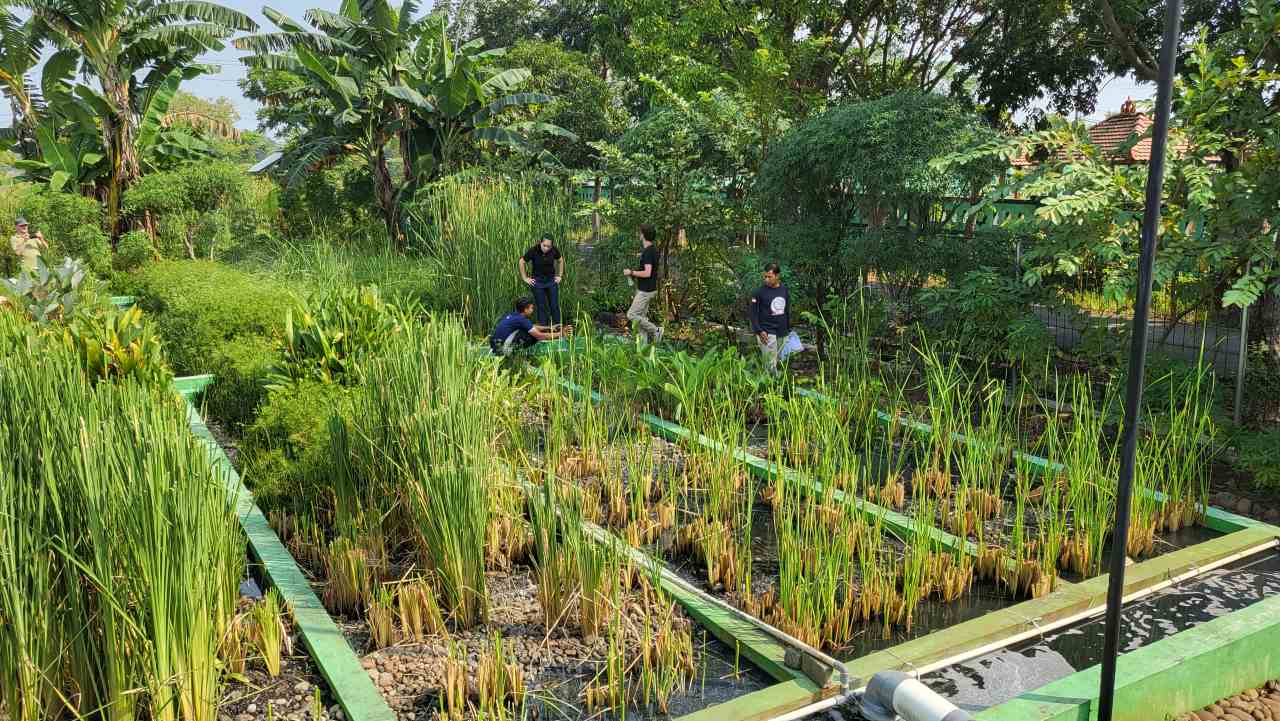
Figure 4. Banyuurip WWTP that uses the combination of anaerobic pond and constructed wetland to treat batik wastewater
The Environmental Agencies of Pekalongan City (DLH) operate all three active WWTPs in Pekalongan. DLH noted that the drainage system between batik wastewater and household wastewater is not separated, which causes poor wastewater management and makes the batik WWTP unable to perform optimally.
WWTP is one of the most critical components in the existing batik wastewater system in Pekalongan and has the most potential for short-term improvement. It is important for the city to find a way to improve or expand the capacity of existing plants and do a proper analysis, which should not only consider the current wastewater situation but also look at future scenarios of more sustainable batik production.

